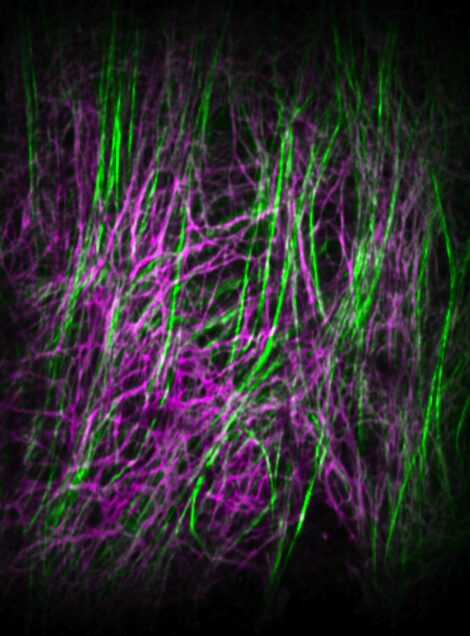Zhang wins $1.7M grant to study diabetic arteries
By Liz Sheeley
Cardiovascular disease is a leading cause of death in the U.S. and diabetics are two to four times more likely to have heart disease or a stroke than non-diabetics. For the past seven years, Associate Professor Katherine Yanhang Zhang (ME, BME, MSE) has been working under a National Institutes of Health (NIH) grant to find out why that is and has just received a $1.7 million grant renewal to continue the promising work.

The initial research led to in-depth understandings of how different microstructures contribute to how artery walls behave. By integrating experimental data obtained from microstructural imaging, mechanical characterization, and computational modeling, Zhang was able to create a robust model of arterial walls. Two different fiber types – elastin and collagen – make up a majority of the vascular extracellular matrix (ECM) and work in tandem to bear the pressure loads within the cardiovascular system. Collagen is the more naturally stiff fiber, while elastin is more, well, elastic.
Elastin provides the flexibility to gracefully handle the ever-changing volume and pressure within the cardiovascular system. Zhang’s research has found that prolonged exposure to glucose alters the fundamental mechanical properties of elastin by stiffening it. Stiffer arteries puts a strain on the system as the body must raise blood pressure to generate flow in affected arteries. These changes could have detrimental effects on cardiac function, but those long-term effects of increased elastin stiffness and the resulting change in how the heart and vessels behave are not yet known.

With the renewal of her grant, Zhang, in collaboration with Dr. Seok-Hyun Yun from Harvard Medical School and Dr. Francesca Seta from BU Medical School, plans to study how individual elastin and collagen fibers change with diabetes. The group will use aortic elastin from humans, and the samples will be half diabetic and half non-diabetic, varying in age. By observing how the ECM changes over age and disease states, the researchers can better understand at a structural level the changes happening due to prolonged glucose exposure. Along with a computational model, Zhang’s research will also study ECM alterations in type II diabetic mice in a long term, controlled environment.
“These understandings are highly clinically relevant,” says Zhang. “Altered structure and composition of the ECM is one of the main factors attributing to stiffening of the arterial wall in diabetic patients.”
The novel approach will link the biological, structural, biochemical and mechanical perspectives of how diabetes changes elastin and ultimately contributes to the faster progression of cardiovascular disease.
“ECM mechanics in diseases is understudied,” says Zhang. “Looking at the ECM may open up new perspectives in therapeutic interventions. Targeting the ECM might be an effective alternate route to treatment for some conditions due to the important reciprocal interactions between cells and ECM.”